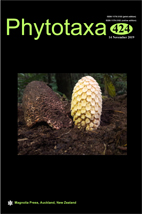Abstract
The application of scientific names is determined by means of nomenclatural types, and every name has to be typified properly. The concept has limitations for unicellular organisms, because original material frequently consists of drawings and/or inadequately preserved physical material. Peridinium cinctum is an abundant freshwater microalga and variable in both morphology and genotype. Morphological variation is mainly expressed in its epithecal conformation: shape deviations of plates, plate rearrangements, plate fusion and plate additions. Different epithecal conformations were traditionally described as either varieties of P. cinctum or were established as closely related species. Despite this, relations between varieties, ribotypes and geographic locations were oversighted, and the full spectrum of plate variation in P. cinctum is still not well represented. For this reason, we sampled localities in Germany and Poland, from which varieties of P. cinctum were described a century ago. We cultivated monoclonal strains, exhibiting two distinct ITS ribotypes, and assessed their epithecal variation of morphology. Based on ca 2,500 observations of individual cells we report a plethora of both plate and suture deviations from the archetypical epithecal conformation of P. cinctum. Morphologies corresponding to previously described varieties were rare, even at their type localities. Nevertheless, we found morphologies consistent with protologues in four cases and use this material for epitypification. These varieties are now linked to specific DNA sequences, allowing reliable application of scientific names for future studies.

